#piatnitzkysaurus
Note
Trick or treat pretty please

Piatnitzkysaurus!
31 notes
·
View notes
Text

I skipped 3 days for Las Vegas trip (it’s a long story). So here’s day 10-13: Hypsilophodon, Piatnitzkysaurus, Giraffatitan, and ornitholestes.
#my art#dinosaur#paleoart#myart#dinosaurs#dinosauria#my drawings#sketchbook#sketchbook app#sketchbookapp#ornitholestes#giraffatitan#piatnitzkysaurus#hypsilophodon#artists on tumblr
21 notes
·
View notes
Photo
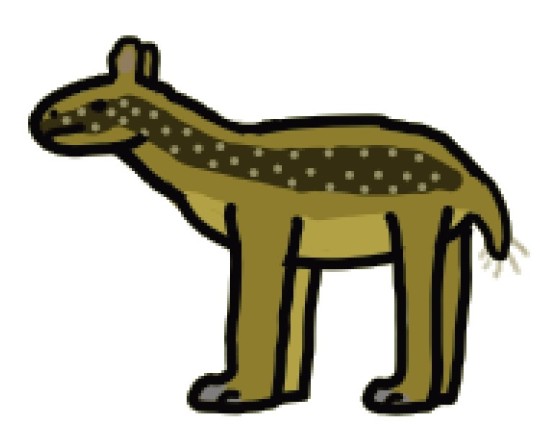

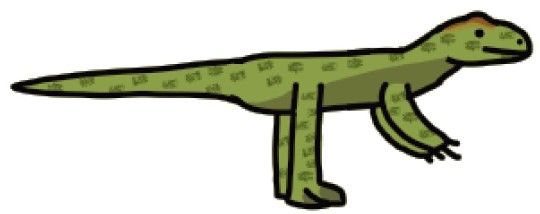

Flocking Together
Moropus
Supersaurus
Piatnitzkysaurus
Spicomellus
1 note
·
View note
Text



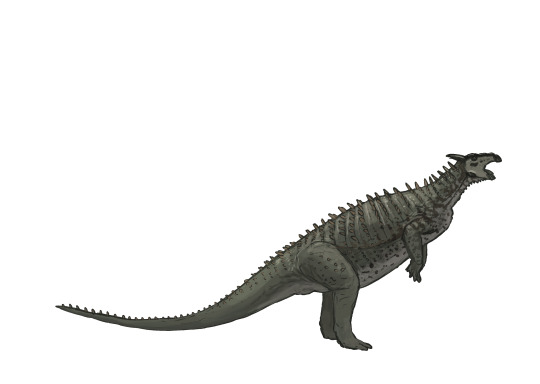
Results from the Flocking together!
In case you don't know, Flocking Together is something we do every Friday on Twitch. People suggest animals and we vote on them to draw them later on stream together within 20 min per creature.
Here you see: Moropus, Supersaurus, Piatnitzkysaurus and Spicomellus.
#paleoart#sciart#moropus#spicomellus#supersaurus#miocene#jurassic#dinosaur#mammal#paleostream#palaeoblr
135 notes
·
View notes
Photo
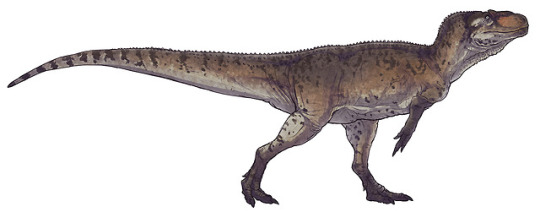
Artistic reconstruction of a Piatnitzkysaurus.
104 notes
·
View notes
Photo

#Asfaltovenator trying to steel a #Patagosaurus catch from a #Piatnitzkysaurus / Asfaltovenator tratando de robarle una presa Patagosaurus a un Piatnizkysaurus https://www.instagram.com/p/B5_dWDhF3NA/?igshid=126rey6gfwcce
0 notes
Photo

And for our final #Dinovember 30: #piatnitzkysaurus ! (Chosen entirely for that name, as I am convinced I could never pronounce it properly!) I can't believe I did two monthly challenges in a row. 💀💀💀 Time to take a break I think! But I hope you've enjoyed all the inktobers, dinosaurs and all that! I still post art pretty much every day - and don't forget to check out my two webcomics: Kay and P (www.kayandp.com) and The Adventures of Lady Skylark (www.ladyskylark.com)! #dinovember2017 #dinosaur #sketch #coloredpencil
1 note
·
View note
Text
10 Dinosaur names that actually exist:
1. Uberabatitan
2. Eustreptospondylus
3. Pachyrhinosaurus
4. Pantydraco
5. Erectopus (really like this one)
6. Gasosaurus
7. Piatnitzkysaurus
8. Concavenator
9. Opisthoceolocaudia
10. Drinker
Drinker, fucking Drinker
3 notes
·
View notes
Text
They may be distant from birds, but they are no less distant from our hearts
213 notes
·
View notes
Text
I Know Dino Podcast Show Notes: Piatnitzkysaurus (Episode 145)
I Know Dino Podcast Show Notes: Piatnitzkysaurus (Episode 145)
In our 145th episode, we got to chat with Matt Baron, about Ornithoscelida. Episode 145 is also about Piatnitzkysaurus, a megalosaurid theropod that lived in the Jurassic in what is now Argentina. We keep meeting more and more amazing dinosaur enthusiasts! Join our growing group on Patreon at https://www.patreon.com/iknowdino You can listen to our free podcast, with all our episodes,…
View On WordPress
#airborne#american museum of natural history#amnh#andrew milner#anna rothschild#Barcelona#beatrice#bipedal#bounce house#british columbia#Burke Museum#Carnivore#centennial week#chocolate#colorado#decorations#denver#dinosaur#dinosaur track#dinosaurs#gobi desert#halloween#home depot#i know dino#Jurassic Files#jurassic foundation#megalosaurid#milwaukee public museum#mongolia#morrisons
3 notes
·
View notes
Photo
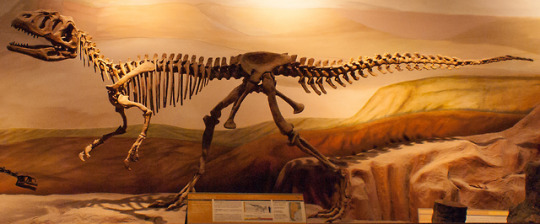
Skeleton of a Piatnitzkysaurus.
128 notes
·
View notes
Photo
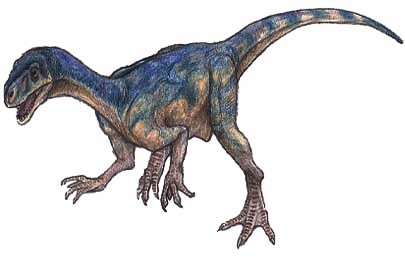
The Piatnitzky’s lizard, Piatnitzkysaurus (1979)
Phylum : Chorata
Class : Reptilia
Order : Saurischia
Suborder : Theropoda
Superfamily : Megalosauroidea
Family : Piatnitzkysauridae
Genus : Piatnitzkysaurus
Specie : P. floresi
Middle Jurassic (164 - 161 Ma)
4,3 m long and 450 kg (size)
Cañadon Asfalto formation, Argentina (map)
The holotype specimen of Piatnitzkysaurus, PVL 4073, was collected during expeditions in 1977, 1982, 1983 at the Canadon Asfalto Formation in sediments that were deposited during the Callovian stages of the Jurassic period, approximately 164 to 161 million years ago. Once thought to be a basal carnosaur, it may instead be a megalosauroid. In total two partial skeletons are known and show that Piatnitzkysaurus was a relatively lightly built medium-sized bipedal carnivore that was around 4.3 metres long and around 450 kilograms in mass, though such estimates apply to the holotype, which is a subadult. It had robust arms and powerful hind legs with four toes on each foot. Its ischium is 423 millimetres long. Its braincase resembles that of another megalosauroid, the megalosaurid Piveteausaurus from France. A general resemblance to the theropod Allosaurus was also noted by Benton (1992).
Skeleton
62 notes
·
View notes
Link
Time for the next round!!! It’s time to vote in the NON-AVIAN THEROPOD GENUS that WILL be the competitor in this year’s Dinosaur March Madness!!!! All eligible genera ARE LISTED. Please READ the below information so that you make an informed voting choice! You have through January 14th!
HIGHLIGHTS & INELIGIBLES
Basal Theropods
Basal members of Theropoda that do not fit into more derived groups. Distinguishing characteristics of theropods include a wishbone. Theropods have remained persistently bipedal throughout their history. Ancestrally carnivorous, some theropods later adapted to omnivory or herbivory.
Highlighted genera include Daemonosaurus (basal theropod with a short skull and protruding teeth), Liliensternus (medium-sized theropod, one of the largest known Triassic theropods from Europe and the best represented), Panguraptor(Coelophysoid known to not have had a head crest unlike other basal theropods), and Tawa (basal theropod that may represent the ancestral body plan of most other theropods).
List of ineligible candidates: Dilophosaurus, Coelophysis
Misc. Tetanurans
Tetanuran theropods that don’t fit into more derived groups. Tetanurans are defined as all theropods more closely related to modern birds than to Ceratosaurus. Tetanurans possess stiffened tails and three-fingered hands.
Highlighted genera include Australovenator (Megaraptoran with extremely flexible forelimbs), Megaraptor (Megaraptoran with large, sickle-shaped claws), Monolophosaurus (medium-sized theropod known from a nearly complete skeleton with a long crest on its skull), and Sinosaurus (theropod similar to Dilophosaurus known with an exceptionally well-preserved braincase).
List of ineligible candidates: Cryolophosaurus
Basal Ceratosaurs
Theropods that are more closely related to Ceratosaurus than to modern birds. Ceratosaurs are known from the Early Jurassic to the Late Cretaceous. Ceratosaurs are known for elaborate crests and ridges on the skull, as well as reduced forelimbs, though the latter were more prominent in derived Ceratosaurs than in basal Ceratosaurs. Most were predators.
Highlighted genera include Ceratosaurus (large ceratosaur with a prominent bladelike horn on the snout), Elaphrosaurus (slender ceratosaur with a notably shallow chest), Limusaurus (an herbivorous ceratosaur that gained a toothless beak in adulthood), and Masiakasaurus (small theropod with front teeth that projected outwards rather than vertically, probably used for fishing).
List of ineligible candidates: None
Abelisauridae
Ceratosaurian theropod dinosaurs that first appeared in the Cretaceous. Towards the end of the Cretaceous, they became the main large predators in the Southern Hemisphere. Abelisaurid skulls tended to be tall in height and short in length, and often featured bony projections along the top. Abelisaurids possessed extremely short arms in proportion to their body size, with most lacking wrist bones.
Highlighted genera include Abelisaurus (large abelisaurid known from a partial skull), Aucasaurus (medium-sized theropod with low brow ridges on its skull), Rugops (small abelisaur with a prominently ridged texture on top of the skull), and Rajasaurus (abelisaur with a single nose horn).
List of ineligible candidates: Carnotaurus, Majungasaurus
Megalosaurs
All theropods more closely related to Megalosaurus than to modern birds. This group includes the Spinosaurs, large bodied theropods that had long crocodile-like snouts and tall projections along the spine forming a sail, and the megalosaurs, also large bodied theropods that had low, long skulls with almost no ornamentation.
Highlighted genera include Suchomimus (large spinosaurid with long, slender jaws and a low sail on its back), Piatnitzkysaurus (medium-sized theropod with a preserved braincase), Torvosaurus (very large theropod with a kinked snout), and Megalosaurus (notable for being the first validly named non-avian dinosaur).
List of ineligible candidates: Baryonyx, Spinosaurus
Carnosaurs
Predatory theropods classified as tetanurans more closely related to Allosaurusthan to modern birds. They ranged from the Jurassic to the Upper Late Cretaceous. Carnosaurs possessed distinctive characteristics such as large eyes with long, narrow skulls, as well as the thigh being longer than the shin.
Highlighted genera include Acrocanthosaurus (very large theropod with tall projections on its spine), Neovenator (Allosauroid with complex passages for nerves in its snout that may have functioned as sensory organs), Yangchuanosaurus (large theropod with multiple hornlets and ridges on its skull), and Concavenator (had a tall, narrow pointed crest on its back and possible quill knobs on its forearms).
List of ineligible candidates: Allosaurus, Carcharodontosaurus
Basal Coelurosaurs and Compsognathids
Mostly predatory theropods that are more closely related to modern birds than to Carnosaurs. A large number of feathered Coelurosaur specimens have been found, and it has been suggested that all Coelurosaurs possessed some stage of feathers. Notable characteristics include slender hands and feet as well as larger brains than other theropods. Compsognathids were small Coelurosaurs. They varied in general form, but both preserved scales and feathers are known for the group.
Highlighted genera include Ornitholestes (small coelurosaurian with a retractable foot claw), Sinocalliopteryx (large Compsognathid with preserved protofeathers and gut contents), Zuolong (potentially the most basal coelurosaur known), Scipionyx (compsognathid with preserved soft tissue and internal organs), and Sciurumimus (coelurosaur with long fluffy feathers on its tail).
List of ineligible candidates: Sinosauropteryx, Compsognathus
Tyrannosauroids
Coelurosaurian theropods that first appeared in the Jurassic and grew to be the dominant predators in the Northern Hemisphere by the end of the Cretaceous. Early Tyrannosauroids were small and possessed three-fingered hands while the later, more derived Tyrannosaurids grew massive with proportionally small arms, two-fingered hands, and bone-crunching jaws. Protofeathers have been found in at least two species, Yutyrannus and Dilong.
Highlighted genera include Dilong (small tyrannosauroid known from nearly complete specimens, one preserved with protofeathers), Albertosaurus (large tyrannosauroid with skin impressions), Guanlong (small tyrannosauroid with a large crest on its skull), Daspletosaurus (large Tyrannosauroid with the longest forelimbs of any tyrannosaurid relative to body size), and Alioramus (medium-sized, long-snouted Tyrannosauroid known from scant remains).
List of ineligible candidates: Tyrannosaurus, Yutyrannus
Ornithomimosaurs
Theropods that superficially resembled modern ostriches. They appeared in the Early Cretaceous and lasted into the Late Cretaceous. They possessed small skulls with large eye sockets and many later ornithomimosaurs had toothless beaks. Ornithomimosaurs also had long arms with strong claws, and are believed to have been omnivores or herbivores. Feathers have been found on several specimens, including some that have very ostrich-like plumage. Most ornithomimosaurs appear to have been built for fast running.
Highlighted genera include Pelecanimimus (small ornithomimosaur with numerous small teeth), Dromiceiomimus (medium-sized ornithomimosaur known from many well-preserved specimens, including some with feathers), Rativates (small ornithomimosaur discovered in the 1930s but unrecognized as a new species until 2016), and Garudimimus (small ornithomimosaur with short heavy legs).
List of ineligible candidates: Deinocheirus, Gallimimus
Therizinosaurs and Alvarezsaurs
Therizinosaurs were theropods from the Early to Late Cretaceous. They were herbivores that possessed massive claws on their hands. They also had modified hips that resembled those of ornithischians, robust hindlimbs, and protofeathers, as well as potentially more complex feathers. Alvarezsaurs were small, long-legged theropods. Later forms bore small, but strong forelimbs that seem to have been adapted for digging or tearing, with a claw being present only on the enlarged thumb. Alvarezsaurs had long, tube-like jaws with many teeth, which has been suggested to indicate that they fed on termites and other colonial insects. At least one specimen has preserved downy feathers.
Highlighted genera include Beipiaosaurus (basal Therizinosaur preserved with several types of feathers), Falcarius (one of the basalmost therizinosaurs known, potentially more omnivorous than later forms), Segnosaurus (large Therizinosaurid with flattened claws), Haplocheirus (large basal Alvarezsauroid that still possessed three functional fingers), and Xixianykus (small Alvarezsaurid with extremely long legs and feet for its body size).
List of ineligible candidates: Therizinosaurus, Shuvuuia, Mononykus, Nothronychus
Oviraptorosaurs
Maniraptoran theropod dinosaurs from Cretaceous Asia and North America. Derived forms are notable for having distinct beaked, parrot-like skulls that often bear some sort of crest. Oviraptorosaurs had short tails, and are known to have brooded over their nests of eggs. Feathers have been found in several forms, including attachment points for wing feathers along the forearm.
Highlighted genera include Caudipteryx (small Oviraptorosaur preserved with complex wing and tail feathers), Avimimus (small Oviraptorosaur with fused hand bones and long legs, known from numerous specimens preserved as a bonebed), Khaan (Oviraptorid that might have had sexual dimorphism and known from complete remains), and Incisivosaurus (Oviraptorosaur with flattened, rodent-like front teeth).
List of ineligible candidates: Citipati, Anzu
Basal Paravians and Troodontids
Basal members of Paraves that don’t fit into other groups. Most possessed a large claw on the second toe of each foot that was usually held off the ground when walking. Paravians generally have winged forelimbs, though the size of the wing relative to the body varies. Troodontids were small, birdlike theropods. They possessed skulls with densely-packed teeth and small sickle claws on their second toes, though these were not as large as the ones seen in dromaeosaurs. They are suggested to have had strong senses, most notably sight and hearing.
Highlighted genera include Jianianhualong (small troodontid that preserves a feathered tail frond and bird-like wings), Mei (small troodontid known from two specimens preserved in sleeping posture), Zanabazar (the largest known Asian troodontid), and Scansoriopteryx (small paravian that had an extremely long third finger possibly supporting a membranous wing).
List of ineligible candidates: Troodon, Yi
Dromaeosaurs
Small- to medium-sized theropods that possessed pennaceous feathers. Their most notable characteristic is the large, sickle claw on the second toe of each foot. This claw is theorized to have been used to help hold down prey when hunting. Many specimens have been found with complex feathers.
Highlighted genera include Zhenyuanlong (medium-sized dromaeosaur preserved with massive wing feathers like birds), Halszkaraptor (small dromaeosaur that shows adaptations for semi-aquatic life like a goose), Buitreraptor (small dromaeosaur with an elongated snout suited to fishing), and Achillobator (very large dromaeosaur with rather stocky legs).
List of ineligible candidates: Deinonychus, Utahraptor, Microraptor, Velociraptor, Dakotaraptor
Basal Avialans
Avialae includes modern birds and all dinosaur s more closely related to them than to “classic” dinosaurs such as Velociraptor and Troodon. Basal avialans were mostly small theropods similar to dromaeosaurids and troodontids. Some forms such as the Confuciusornithids and Sapeornis had very short tails, similar to modern birds. The ability to fly also became more widespread in Avialae, though these basal members were probably still relatively poor fliers compared to most modern flying birds.
Highlighted genera include Jeholornis (relatively large, seed-eating avialan with unusual tail plumage), Serikornis (small avialan with “silky” feathers similar to those of Silkie chickens), Anchiornis (small avialan known from numerous well-preserved specimens, allowing for detailed reconstruction of its plumage and coloration), and Sapeornis (relatively large, seed-eating avialan that was probably adapted to soaring).
List of ineligible candidates: Archaeopteryx, Balaur, Confuciusornis
Enantiornitheans
One of the most successful groups of Mesozoic avialans. Enantiornitheans were mostly small, tree-dwelling dinosaurs representing a broad diversity of ecologies. Most Enantiornitheans likely had flight abilities approaching those of modern birds, but they typically differed from modern birds in several notable ways, such as having teeth instead of beaks, as well as a relatively slow growth rate.
Highlighted genera include Shanweiniao (enantiornithine with several pairs of elongate tail feathers, likely for display), Iberomesornis (one of the smallest known Mesozoic dinosaurs), Pengornis (relatively large enantiornithine with blunt teeth), Bohaiornis (relatively large enantiornithine that may have been raptorial), and Longipteryx (long-snouted enantiornithine).
List of ineligible candidates: Avisaurus
Euornitheans
Euornithes includes modern birds and everything more closely related to them than to Enantiornitheans. Euornitheans differ from other Avialans in being able to spread and fold the fan of feathers on their tail, which helps them maneuver in flight. They are also beaked on at least their jaw tips, though many Mesozoic forms retained teeth further back in the jaws. The following are Euornitheans that don’t belong to the more specific group Neornithes (the least inclusive group including all modern birds).
Highlighted genera include Ichthyornis (one of the first-described Mesozoic Euornitheans), Apsaravis (desert-dwelling Euornithean known from a nearly complete specimen), Patagopteryx (flightless Euornithean with stumpy feet), and Yanornis (fish-eating Euornithean known from many well-preserved specimens).
List of ineligible candidates: Hesperornis
By @quetzalcoatlusnorthropi,
@tacosaurusbell,
@albertonykus,
and @raptorcivilization
160 notes
·
View notes
Text
Piatnitzkysaurus - Episode 145
Interview with Matthew Baron from the University of Cambridge. He's the author of the paper which proposed reclassifying dinosaurs into Ornithoscelida instead of the classical Saurischia and Ornithischia
In the news: We cover the first day of SVP; new Triceratops skull found near Denver, Colorado; new dinosaur exhibits; videos; planters; and more
Dinosaur of the day Piatnitzkysaurus, a megalosaurid theropod that lived in the Jurassic in what is now Argentina.
To get access to lots of patron only content check out https://www.patreon.com/iknowdino
If you're interested in getting What Happened to Brontosaurus, check out the links on http://iknowdino.com/books/what-happened-to-brontosaurus/
For links to every news story, all of the details we shared about Piatnitzkysaurus, and our fun fact check out http://iknowdino.com/piatnitzkysaurus-episode-145/
Check out this episode!
1 note
·
View note